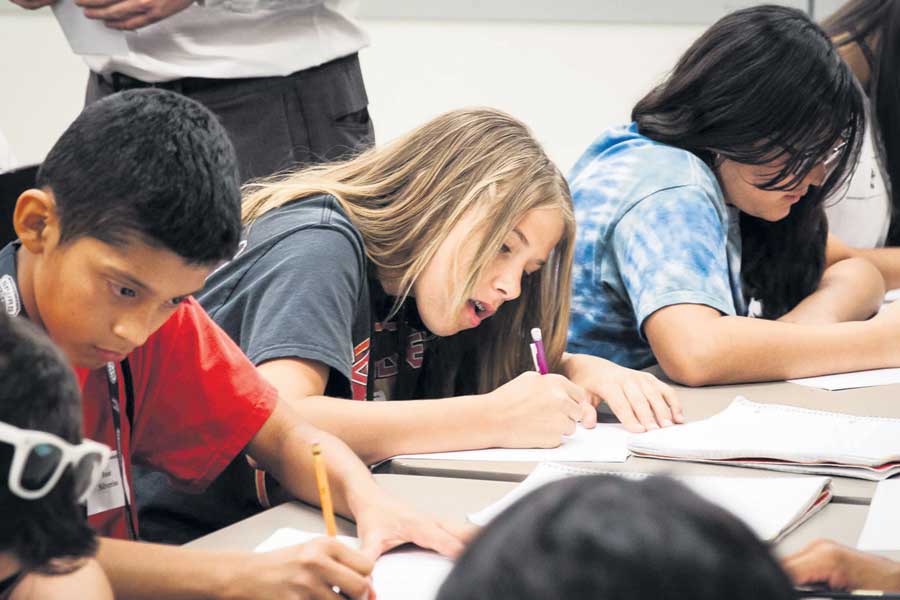The landscape of education is undergoing a profound transformation, with a focus on inclusivity and personalized learning like never before. In the heart of this educational revolution lies special education, a field dedicated to meeting the unique needs of students with disabilities and diverse learning profiles. As we delve into the realm of special education, we will explore the remarkable innovations and strategies that are enhancing support for diverse learners and ensuring that every student has the opportunity to thrive.
Understanding the Importance of Special Education
Special education is a branch of education that caters to students with a wide range of disabilities, including but not limited to:
- Learning Disabilities: These may affect a student’s ability to read, write, or perform mathematical calculations.
- Intellectual Disabilities: These can lead to limitations in cognitive functioning and adaptive behaviors.
- Autism Spectrum Disorders (ASD): Students with ASD may experience challenges in social interaction, communication, and repetitive behaviors.
- Emotional or Behavioral Disorders: These can manifest as difficulty regulating emotions or behaviors, impacting the learning environment.
- Physical Disabilities: These encompass a wide range of conditions, from mobility impairments to chronic health issues.
- Sensory Impairments: This category includes students who are deaf, hard of hearing, blind, or visually impaired.
- Speech or Language Impairments: These can affect a student’s ability to communicate effectively.
Special education services are designed to provide individualized support to help students overcome their unique challenges and access the general education curriculum to the fullest extent possible. The goal is not just to accommodate disabilities but to empower students to achieve their highest potential.
Innovations in Special Education
**1. *Universal Design for Learning (UDL)*
Universal Design for Learning (UDL) is a framework that seeks to make education accessible to all students from the outset. Rather than retrofitting accommodations for students with disabilities, UDL involves designing curriculum materials, teaching methods, and assessments that can be used by a wide range of learners. It recognizes that students have different learning styles, preferences, and abilities. By providing multiple means of representation, engagement, and expression, UDL creates flexible learning environments where diverse learners can succeed.
2. Assistive Technology
Advancements in technology have paved the way for groundbreaking assistive technology (AT) solutions. These tools can include screen readers for students with visual impairments, speech-to-text software for those with writing difficulties, and communication devices for nonverbal students. Innovations in AT continue to expand possibilities for students with disabilities, helping them engage more fully in the learning process.
3. Personalized Learning Plans
Personalized learning plans (PLPs) are tailored strategies that cater to individual student needs. These plans take into account a student’s strengths, weaknesses, learning style, and interests. PLPs enable educators to provide targeted instruction and support, ensuring that each student receives the help they require to thrive academically.
4. Inclusive Classrooms
The concept of inclusive classrooms emphasizes the value of educating students with disabilities alongside their typically developing peers. Inclusive education is not just about physical placement but fostering an environment where students of all abilities can interact, collaborate, and learn from one another. This approach promotes social inclusion and helps break down barriers between students with and without disabilities.
5. Response to Intervention (RTI)
Response to Intervention (RTI) is a multi-tiered approach to identifying and supporting students with learning and behavior needs. It involves early intervention and ongoing assessment to determine the level of support required. RTI aims to prevent academic failure and reduce the number of students referred for special education services by providing targeted assistance to struggling learners.
6. Online Learning and Remote Support
The advent of online learning platforms and remote support options has opened up new possibilities for students with disabilities. These technologies allow for flexible scheduling, personalized pacing, and tailored support, making education more accessible to those who may face barriers in traditional classroom settings.
Challenges and Future Directions
While innovations in special education have come a long way, there are still challenges to address. Some of these include:
- Equity: Ensuring that all students, regardless of their background or location, have access to quality special education services.
- Teacher Training: Providing educators with the training and resources they need to effectively implement innovative strategies and technologies in the classroom.
- Stakeholder Collaboration: Fostering collaboration among parents, educators, specialists, and students themselves to create holistic support systems.
- Assessment and Evaluation: Developing more inclusive and comprehensive assessment methods that capture the progress and abilities of diverse learners.
- Transition Services: Preparing students with disabilities for life after school, including higher education, employment, and independent living.
As we move forward, the field of special education will continue to evolve, driven by a commitment to providing every student with the tools they need to succeed. By embracing innovation, fostering inclusivity, and addressing the unique needs of diverse learners, we are working toward a future where every student’s potential is recognized, nurtured, and celebrated. In this journey, we are not just enhancing support for special education; we are enhancing the future for all learners.


